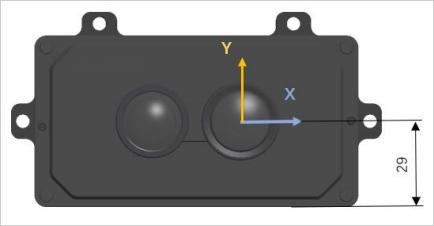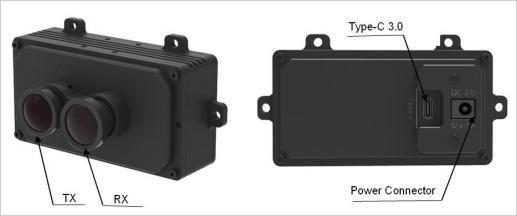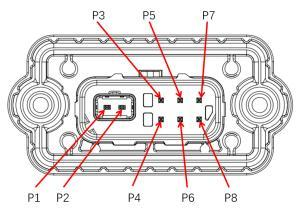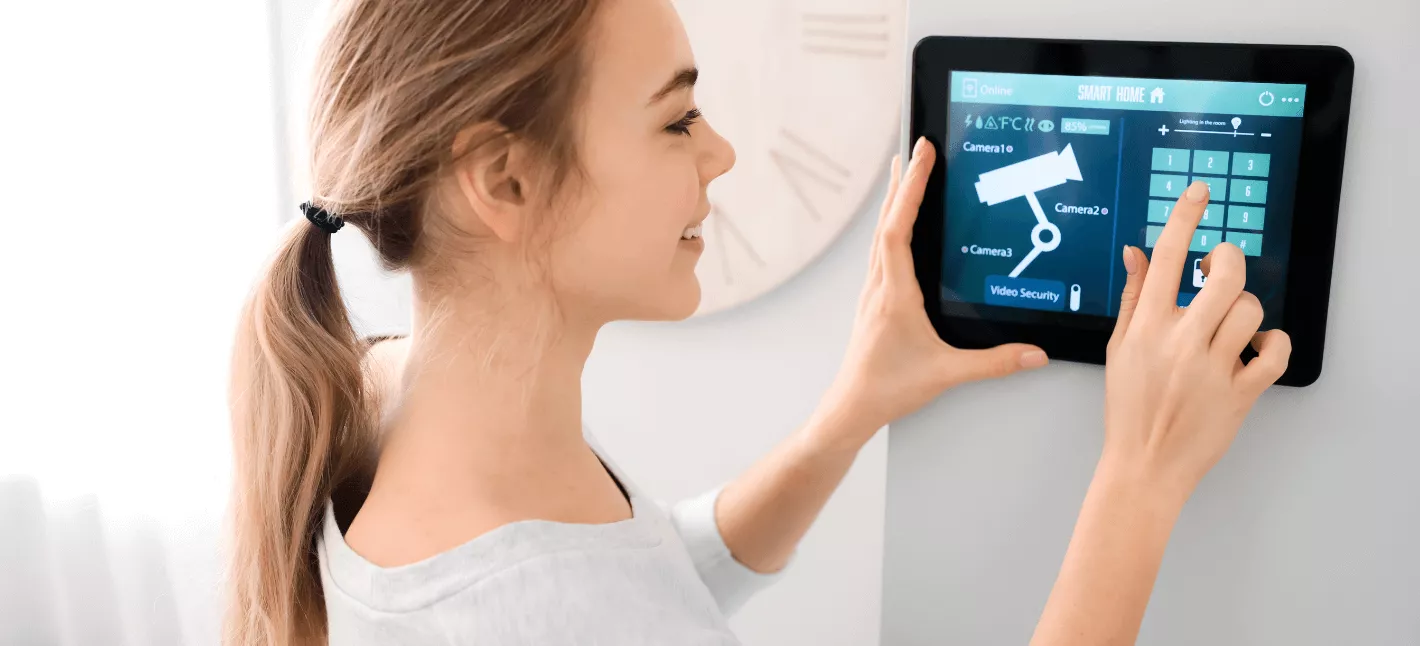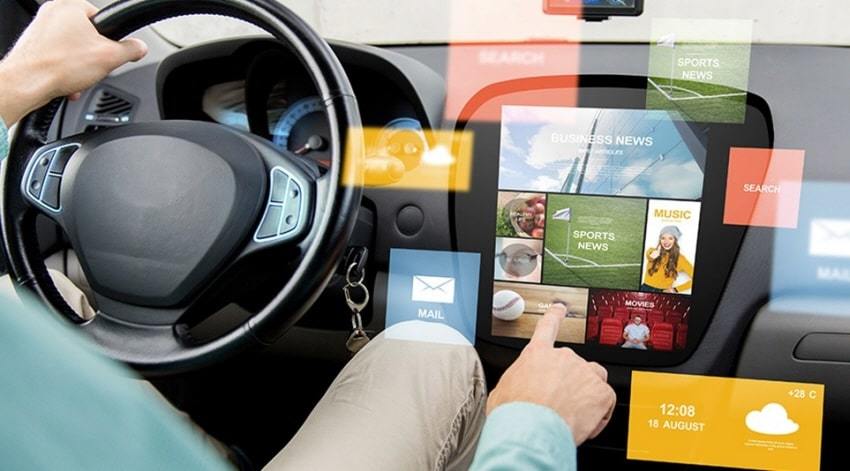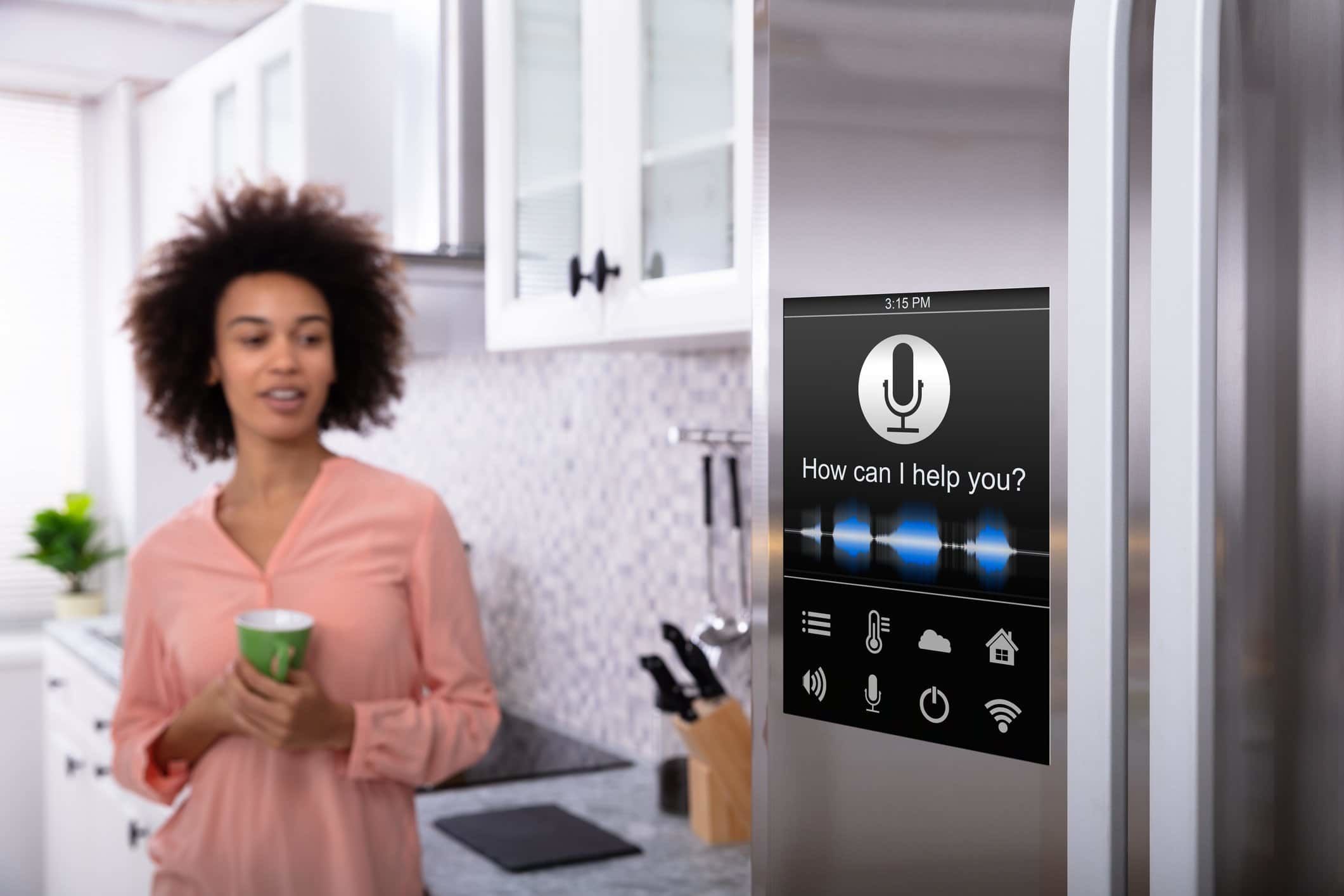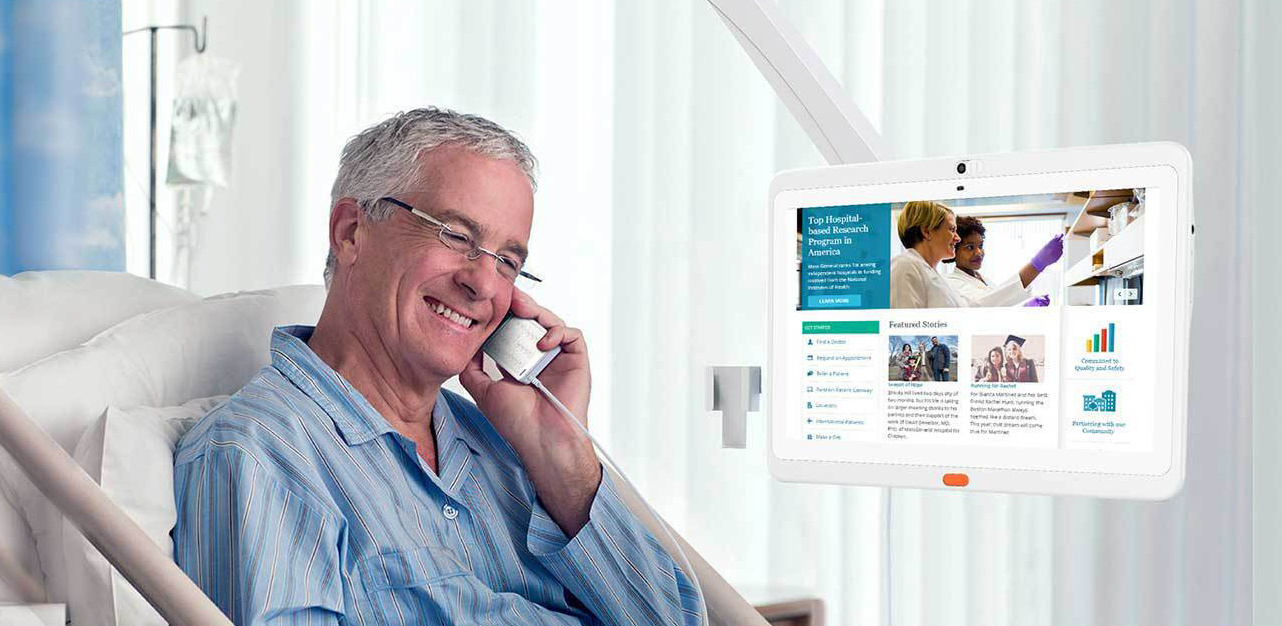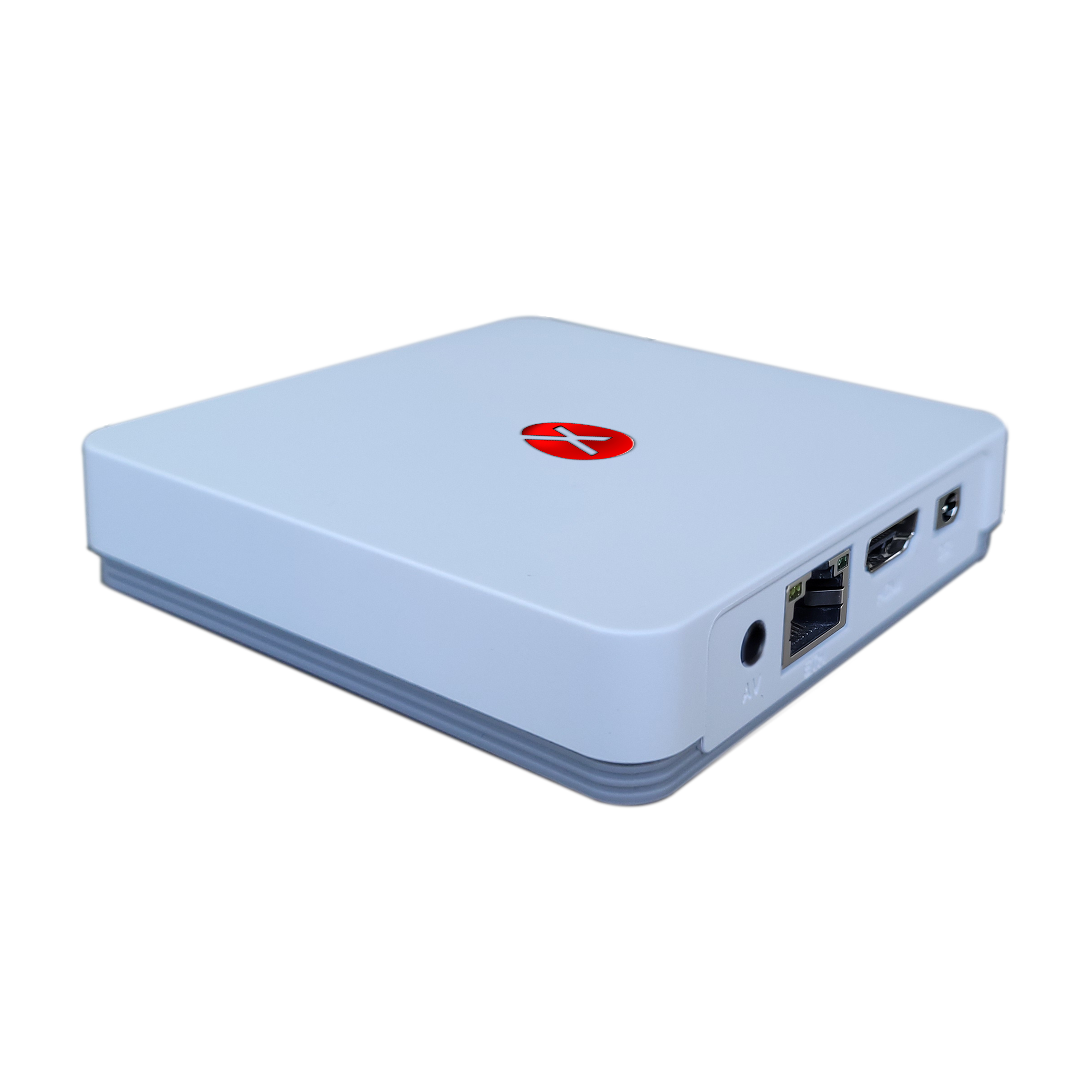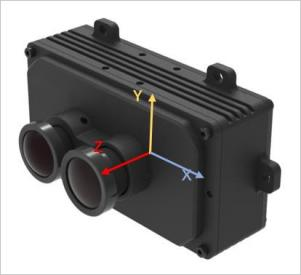

SPAD dToF Depth Sensor Module
Key words:
SPAD TOF sensor module
Edge computing AI box with Algorithm NPU
Product Detail
SPAD dToF Depth Sensor
SPAD (Single Photon Avalanche Diode) dToF (direct Time-of-Flight) Depth Sensor is a cutting-edge technology that revolutionizes depth sensing in various applications such as robotics, autonomous vehicles, augmented reality, and more. This article will delve into the working principle, advantages, and potential applications of the SPAD dToF Depth Sensor.
Working Principle
The SPAD dToF Depth Sensor operates based on the principle of time-of-flight measurement, which involves calculating the distance to an object by measuring the time taken for a light pulse to travel from the sensor to the object and back. The SPAD technology enables the sensor to detect single photons, resulting in high sensitivity and accuracy in depth measurements. By utilizing a high-speed SPAD array, the sensor can capture and process depth information in real-time, making it suitable for dynamic environments.
Advantages
One of the key advantages of the SPAD dToF Depth Sensor is its high precision in depth measurements. The ability to detect single photons allows for precise distance calculations, even in low-light conditions. Additionally, the high-speed operation of SPAD technology enables rapid data acquisition, making the sensor suitable for applications that require real-time depth sensing.
Another advantage of the SPAD dToF Depth Sensor is its compact size and low power consumption. The sensor can be integrated into small devices without compromising performance, making it ideal for portable and embedded applications. Furthermore, the low power consumption of SPAD technology ensures efficient energy usage, extending the battery life of devices.
Potential Applications
The SPAD dToF Depth Sensor has a wide range of potential applications across various industries. In robotics, the sensor can be used for obstacle detection, navigation, and object recognition. Its high precision and real-time capabilities make it ideal for autonomous robots operating in dynamic environments. In the automotive industry, the sensor can be integrated into autonomous vehicles for collision avoidance and parking assistance.
In augmented reality and virtual reality applications, the SPAD dToF Depth Sensor can enable immersive experiences by accurately capturing the depth of the surrounding environment. This allows for realistic virtual overlays and interactions in AR/VR applications. Additionally, the sensor can be used in biometric authentication systems for face recognition and gesture detection.
Conclusion
The SPAD dToF Depth Sensor represents a significant advancement in depth sensing technology, offering high precision, real-time operation, and low power consumption. Its versatility and potential applications make it a valuable tool in various industries, from robotics to augmented reality. As the technology continues to evolve, the SPAD dToF Depth Sensor is poised to drive innovation and enable new possibilities in depth sensing.
Advantage
Advanced long-range 3D sensing
SPAD DToF depth sensors utilize avalanche multiplication of electrons upon photon impact to amplify detected signals for accurate detection of faint light signals over long distances. These sensors can measure distances of more than a few dozen meters and provide a wider coverage for 3D imaging compared to iToF sensors. They are ideal for applications such as AGVs and AMRs for obstacle detection during autonomous navigation, as well as safety light curtains for preemptive identification of potential entry risks in specific areas.
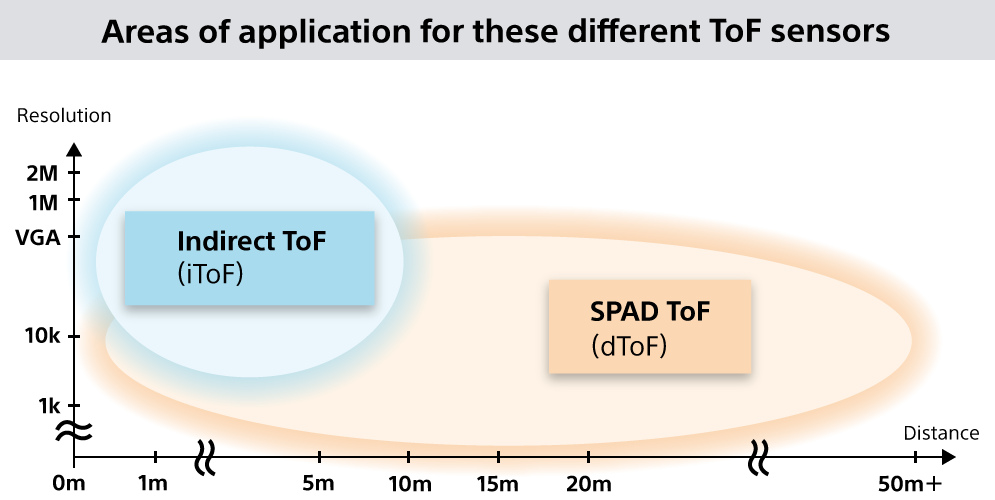
High resolution
SPAD dToF sensors can achieve high resolution by capturing a large number of depth points in a scene, resulting in detailed and accurate depth maps. This makes them ideal for applications such as robotics, augmented reality, and autonomous vehicles where precise depth sensing is critical.
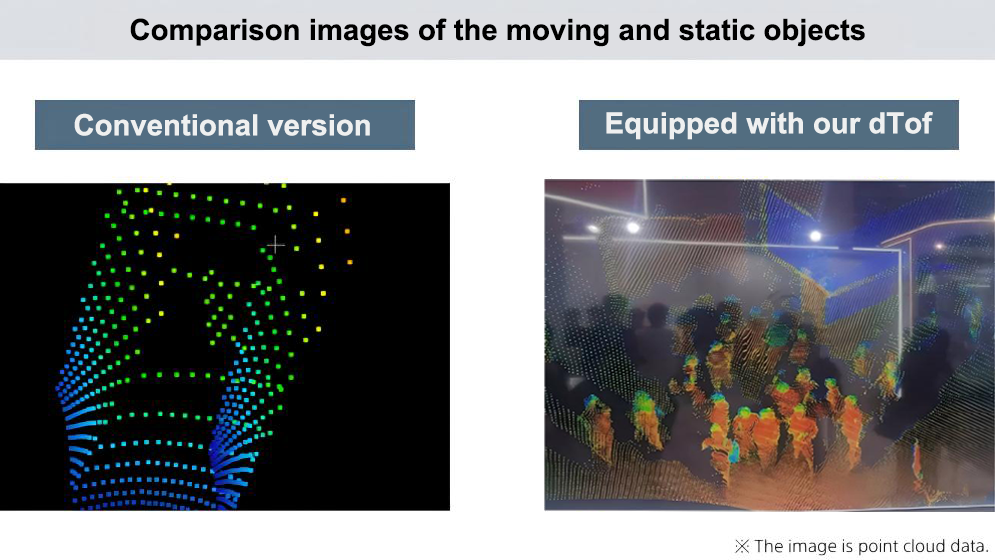
Multi-path resistant depth sensing system.
In order to ensure precise distance measurement, it is crucial to eliminate signals that may be reflected in unintended paths, as they can lead to inaccuracies in the measurement process. This is especially true for concave shapes, like the corners of a room, which can cause light signals to bounce off in unexpected ways. The SPAD ToF depth sensor's advanced depth sensing algorithm tackles this issue by measuring the distance to the object multiple times and analyzing the data statistically. This results in high-accuracy, low-noise measurements that are free from distortion, even in challenging scenarios like corners. As a result, this technology offers improved reliability and accuracy in a wide range of applications.
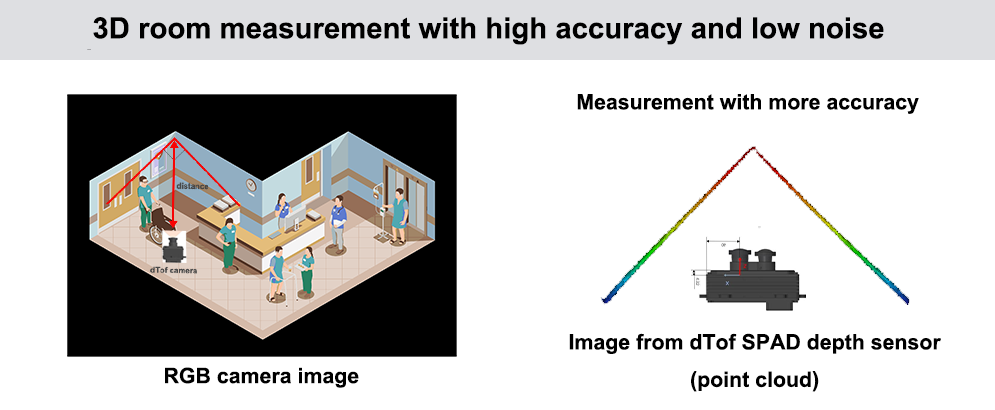
Revolutionizing Machine Vision with 3D Technology: A New Era of Visual Innovation.
The field of machine vision has gone through a transformation from analog to digital, from still to moving images, and from black and white to color. The latest advancement in technology is 3D vision, which enhances machine vision by providing stereo images that can be used in various applications such as Face ID, mobile phones, VR/AR, and industrial vision. This new technology has opened up new possibilities and is revolutionizing the way we see and interact with the world around us.
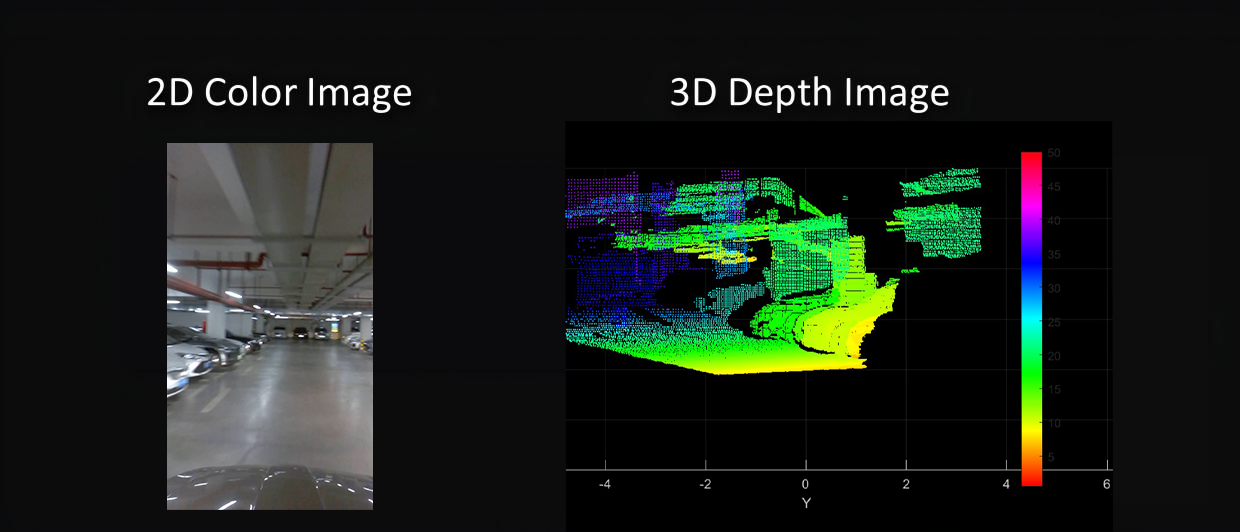
Compact Integration-Ready Design
dTof technologies have developed image sensors that combine SPAD pixels and depth-sensing processing circuitry into a single chip. This integration results in high resolution in a compact size, simplifying the LiDAR structure. Such technology is ideal for applications that demand low power consumption, compact design, and adaptability. The integration of these features on a single chip also helps reduce the cost of LiDAR systems. with the world around us.
Edge Al Box Use Cases
Automation in logistics warehouse and storage
ToF image sensors can contribute to automation in various applications uniquely suited to them, from improving efficiency of material handling by measuring pallet and cargo positions, sizes, and content ratios; to detecting potential accidents and identifing external conditions of moving bodies such as Automated Guided Vehicles, Robots and “last one mile” staff.
3D SPAD dToF depth sensors are suitable for long-range applications indoors and outdoors.
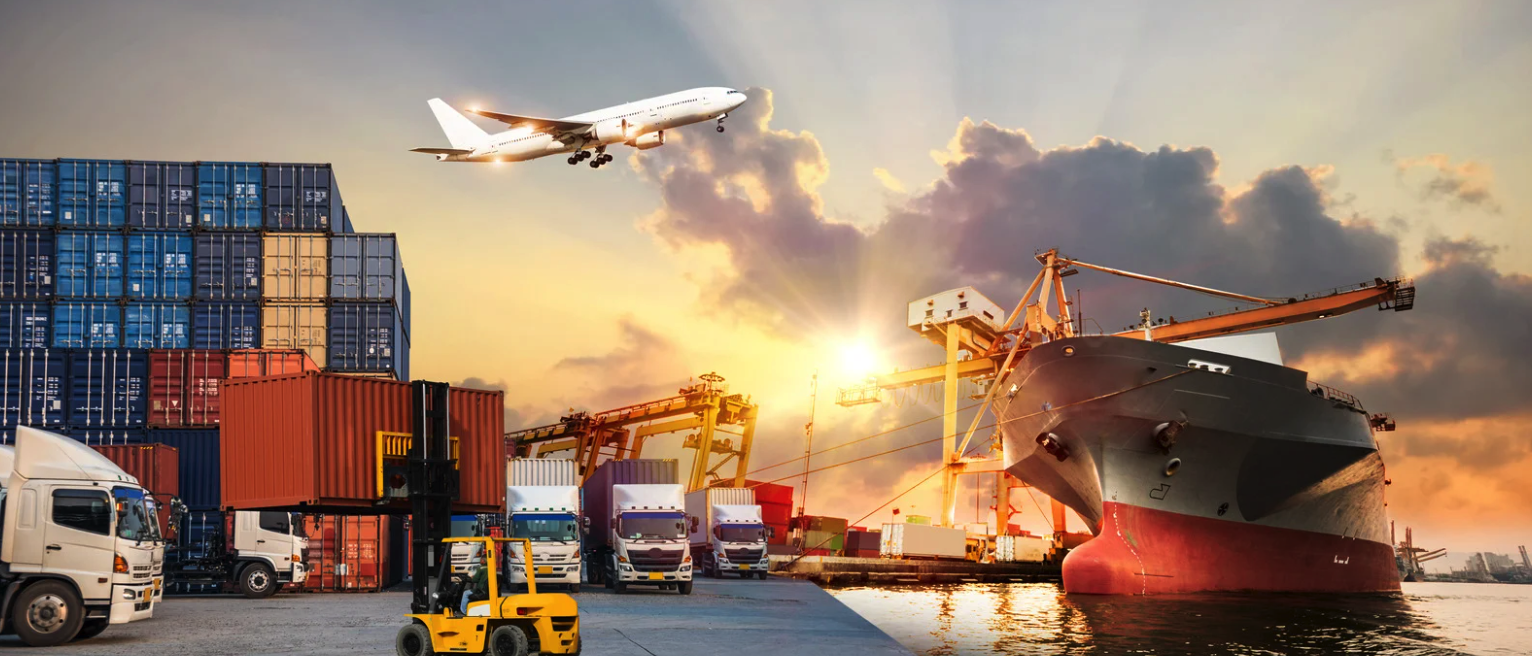
Factory automation
In Food/Medicine/Cosmetic Manufacturing, 3D dToF SPAD image sensors can be used in management of shortages according to content level; production automation such as target position detection for robotic arm picking; improvements the efficiency by monitoring the operations of site workers; and safety assurance by detecting intrusion into hazardous areas.
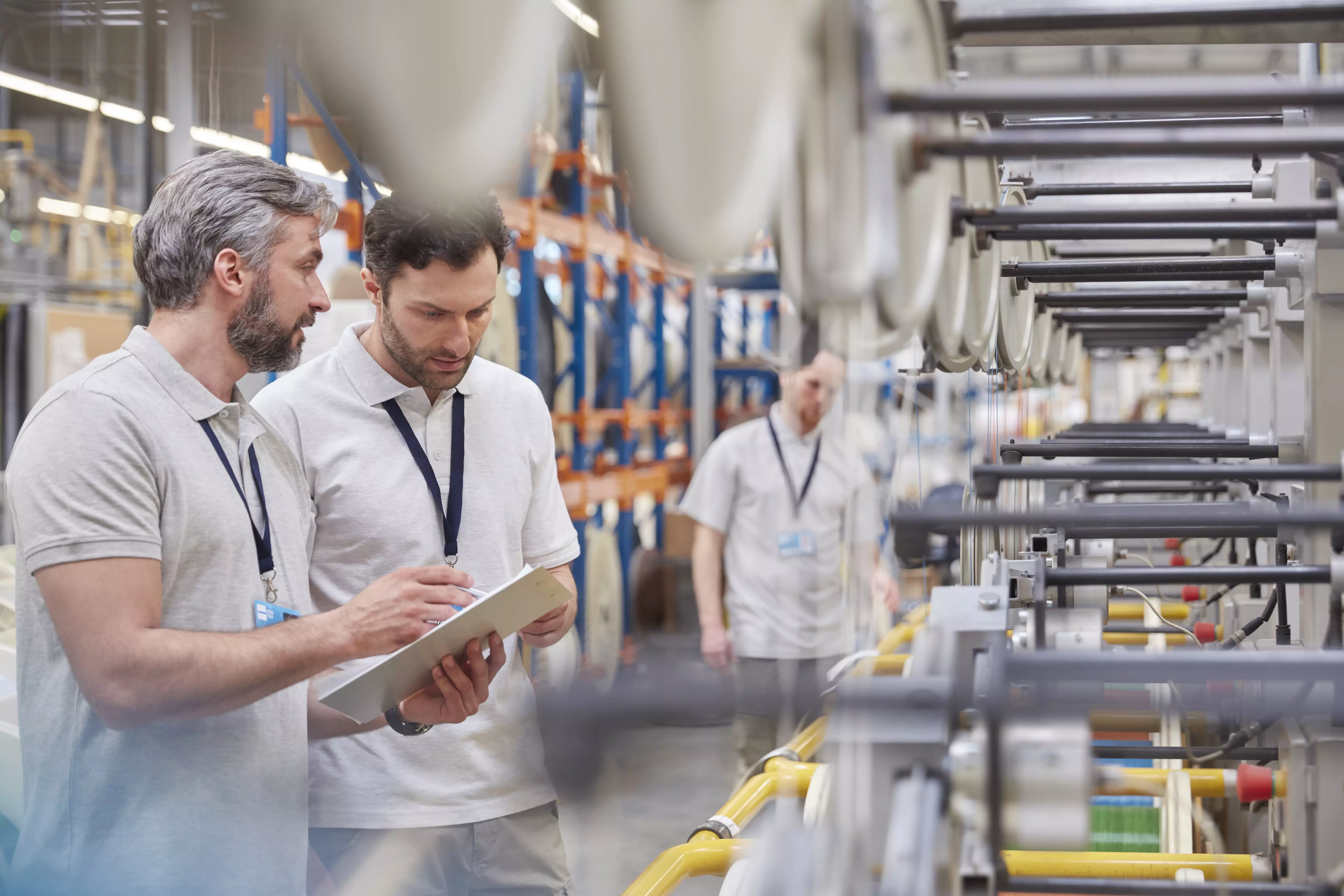
Recognition of humans at industrial and public facilities
Even in settings where judgment by two-dimensional sensors is difficult, such as where the images of people overlap each other at high density, ToF image sensors easily recognize humans. Therefore, they can be used in applications such as identifying crowding conditions in locations such as shops, airports, and theme parks, carrying out advanced-level recognition of the open/closed status of automatic doors, and managing room entries and exits. By estimating the poses of human bodies in a three-dimensional manner, they can also support customer behavior data analysis in shops.
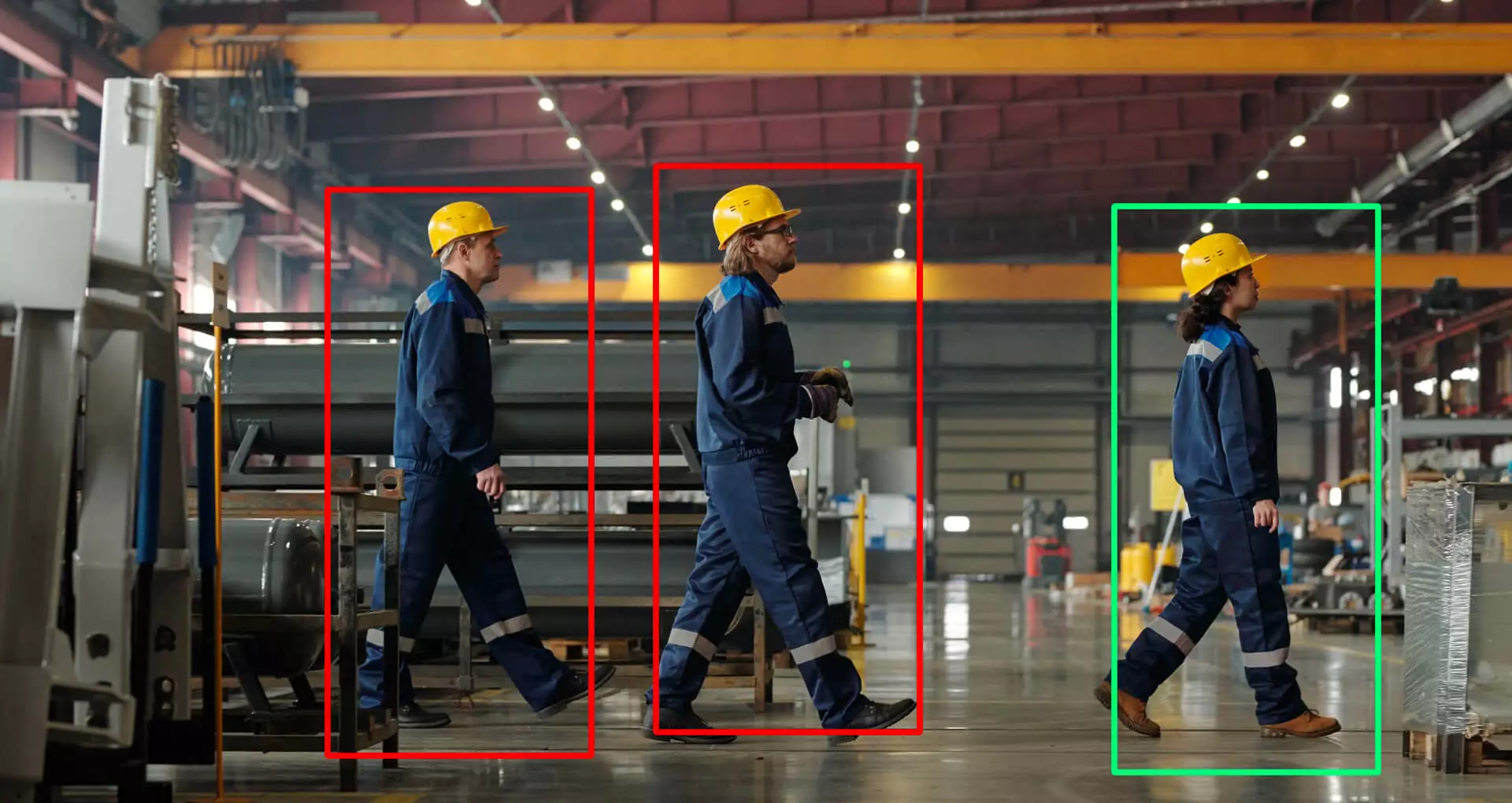
Support for harvesting in farming and agriculture
They can be used in quality management and productivity improvements by supporting automatic milking machines for dairy cows as well as monitoring body shape, walking patterns, and the remaining amount of feed. In the field of agriculture, they can contribute to automatic thinning and harvesting of fruits through three-dimensional picking, and automatic operation of agricultural equipment through three-dimensional monitoring of the surroundings.
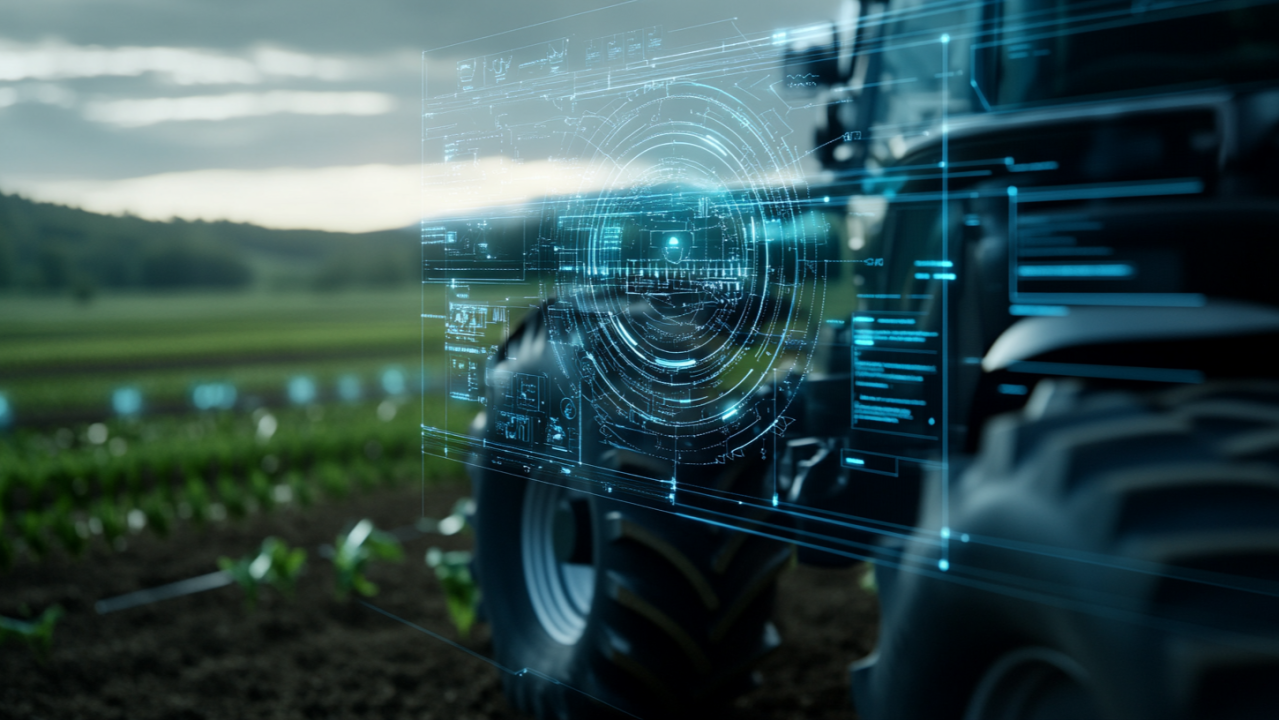
Support for civil engineering work
ToF image sensors can be applied to the ICT conversion of heavy machinery, which can include operator support, automation, and safety assurance by monitoring the surrounding conditions. They are also anticipated to be applied to visualization and record-keeping of construction conditions, through three-dimensional measurement of soil volume in civil engineering work, construction conditions in building construction work, and infrastructure installation status.
SPAD ToF depth sensors are expected to be useful in construction sites that are dangerous to enter, hazardous areas in general, and indoor areas that do not allow positioning by GPS or other satellite navigation systems. They can easily create 3D maps of nearby areas by measuring the surroundings.
In addition, 3D data with RGB information can be acquired by combining a SPAD ToF depth sensor and an RGB sensor. These 3D models that come with RGB information are useful for verifying the progress of construction and for private viewing of completed buildings.

Railroad monitoring
SPAD ToF depth sensors also have great potential in the field of smart infrastructure. For example, they are expected to play a crucial role in railway monitoring.
Station platforms and railway tracks are prone to the influence of outdoor light and a lot of noise. In such an environment, long-range monitoring is required. SPAD ToF depth sensors, which detect even faint light with high accuracy, are resistant to the influence of outside light such as outdoor sunlight. They are also capable of long-range measurement, which make them useful for checking and monitoring for any person or object on the track, or an umbrella or a bag getting in the way when railcar doors open and close.
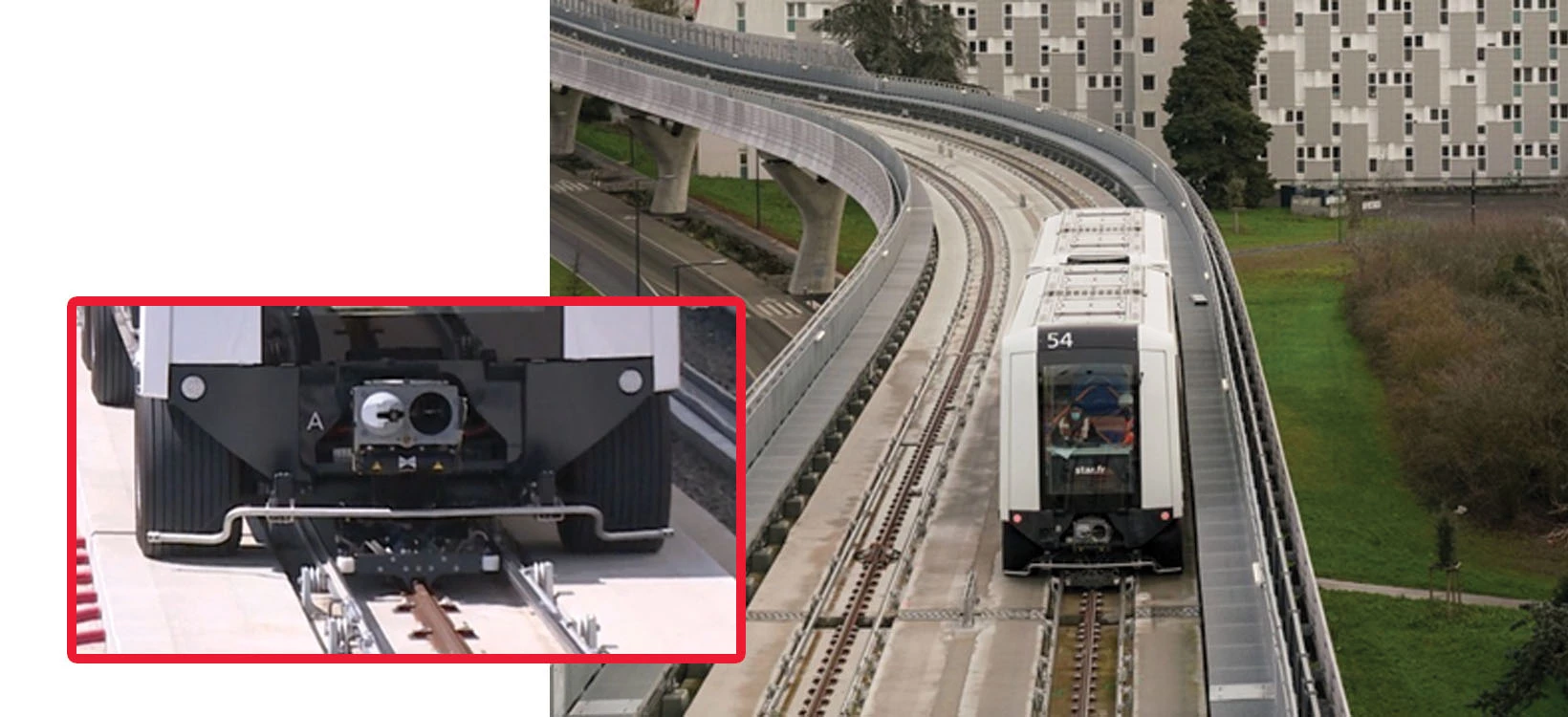
Monitoring with consideration for privacy
ToF image sensors acquire information on people and objects as 3D data. If applied to the nursing care facilities, for example, this feature will make it possible to capture the existence or poise of the care recipients accurately without using RGB images to prevent them from falling or to detect the accidents early. They are expected to be applied to privacy-conscious safety monitoring.

Using senarios
The integration of smart hardware and software has revolutionized various industries, enabling enhanced efficiency and innovative solutions. For instance, in the healthcare sector, smart wearable devices equipped with sensors continuously monitor vital signs, transmitting real-time data to healthcare providers. This allows for proactive patient management and timely interventions, ultimately improving health outcomes. In the realm of smart cities, interconnected sensors and IoT devices optimize urban infrastructure. Traffic management systems utilize real-time data from vehicles and pedestrians to adjust signal timings, reducing congestion and minimizing travel times. Additionally, smart waste management solutions employ sensors in bins to monitor fill levels, facilitating efficient collection routes and reducing operational costs. Furthermore, in the manufacturing industry, smart factories leverage advanced analytics and machine learning algorithms to predict equipment failures before they occur. This predictive maintenance approach minimizes downtime and operational disruptions, enhancing productivity. These scenarios illustrate the profound impact of smart hardware and software, driving advancements across diverse sectors by harnessing data intelligently to improve decision-making, operational efficiency, and overall quality of life. As technology continues to evolve, the potential for further innovation remains boundless.
Video Demo


AI chatbox with local algorithm,touch detection,camera,array mic etc.


Interactive control center with display


Total solution of smart display before assembly into enclosure


featured launcher

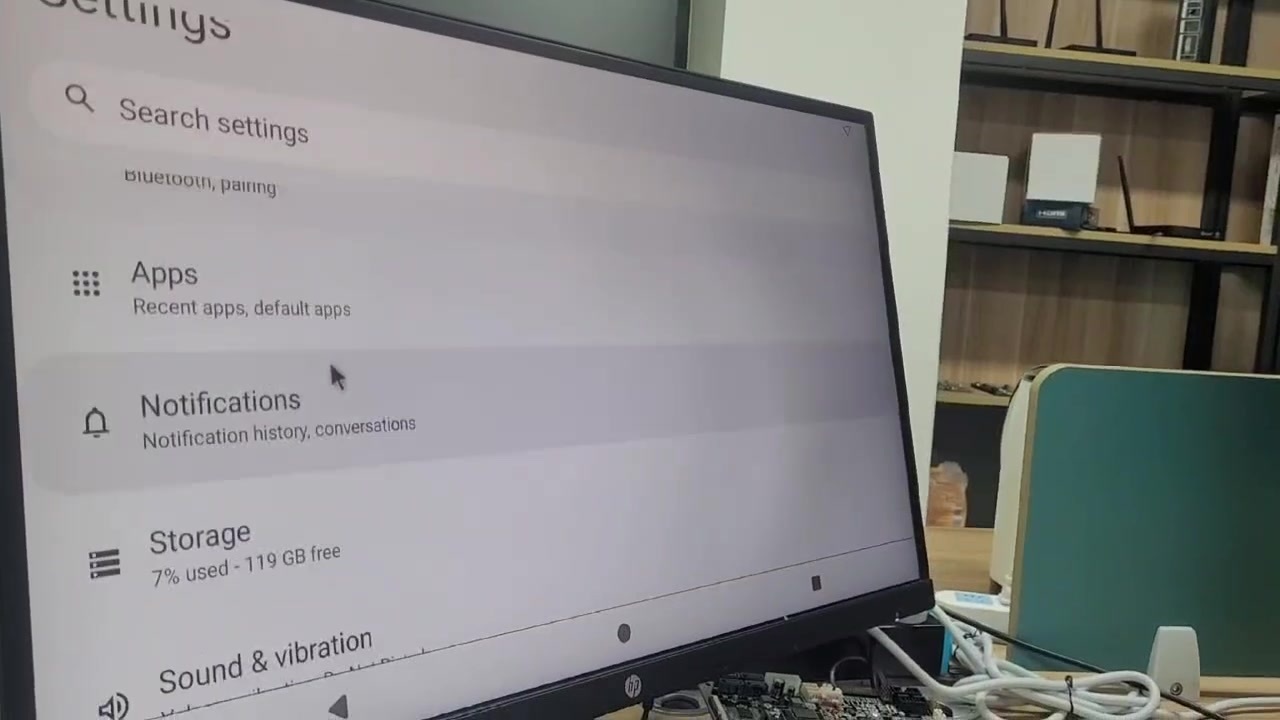
Screen rotation in all direction on smart display

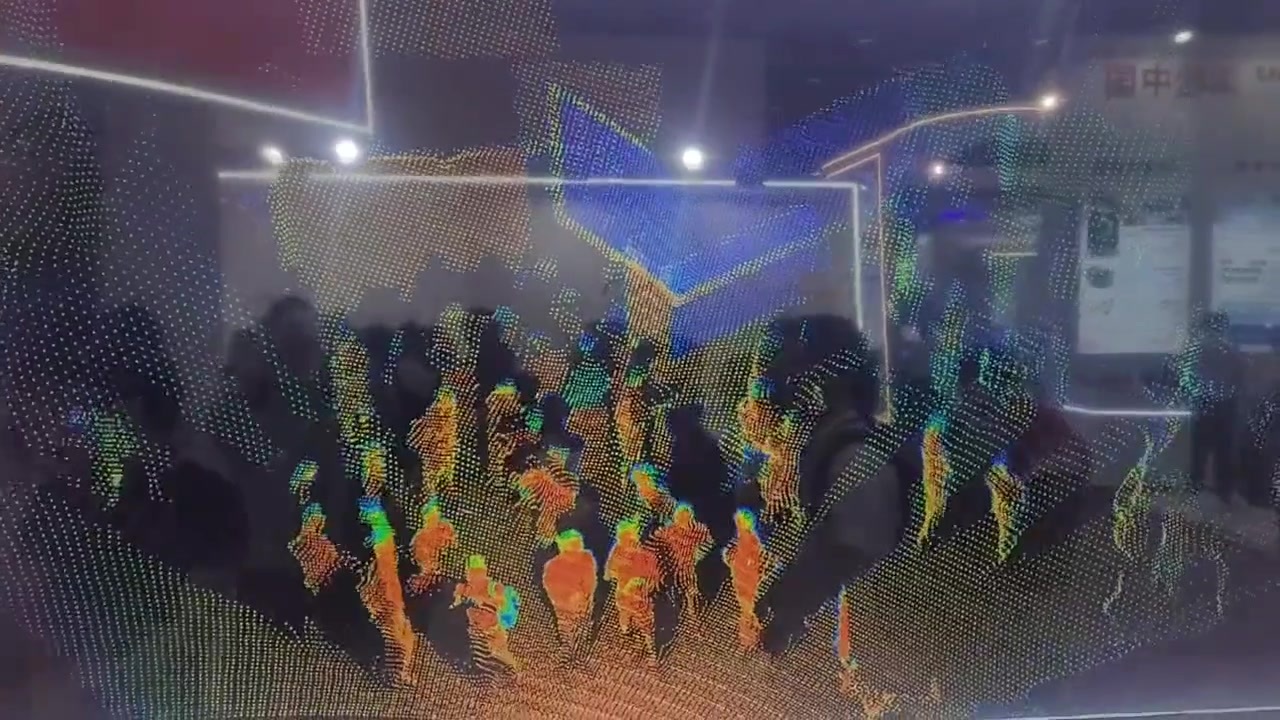
3D spad dTof lidar module for robots, vehicles, drones etc.
FAQ
what's edge computing box?
Regular website maintenance is the key to ensure the security, stable operation and user experience of the website. Maintenance work includes updating website content, checking and repairing website links, backing up data, conducting regular security checks, fixing vulnerabilities, optimizing performance, etc. These efforts help ensure that the website works effectively and provides a good user experience in the long run.
What is the difference between UI and UX in website design?
UI (user interface) and UX (user experience) are two important aspects of website design. UI focuses on the design, layout, and visual elements of a website, while UX focuses on the overall feel and interaction of the user on the website, including ease of use, navigation, interaction, and so on. Good UI design usually improves the user's UX experience.
What are the types of web hosting services?
Web hosting services can be divided into shared hosting, virtual Private servers (VPS), standalone servers, and cloud hosting. Shared host is multiple websites share a server resource, VPS is a virtual private server, independent server is a dedicated server, and cloud hosting based on cloud services to provide hosting solutions, each type has different characteristics and application scenarios.
What is the role of the website traffic statistics tool?
Traffic statistics tools such as Google Analytics help analyze website visit data, including visitor sources, visits, and user behavior. By understanding this data, website owners can understand the audience, adjust the content and design of the website, improve the user experience, and increase conversion rates.
Related Products



